Localization, orchestrated with AI
From apps to websites, simplify localization every step of the way with AI translations and workflows. Focus on growth while we eliminate complexity.





Shape your localization strategy to fit your needs
Product teams
Launch multilingual products instantly
Accelerate product launches in multiple languages with AI localization. Integrate seamlessly into your release workflow.
Marketing teams
Speed up translations without losing quality
Boost productivity with AI-powered tools and full context. Deliver high-quality, accurate translations with ease while maintaining your unique style and tone.
Developers
Localization built for agile teams
Take localization off your backlog with a platform built for high-frequency content updates. Seamlessly integrate it into your CI/CD workflow.
Localization managers
More efficiency, more localized content
Localize more with less effort on an all-in-one platform. Bring all stakeholders together, streamline collaboration, and deliver authentic, on-brand translations efficiently for every market.
Transifex is loved by leading organizations worldwide













Manage translation projects across teams
Transifex TMS empowers seamless collaboration across teams.

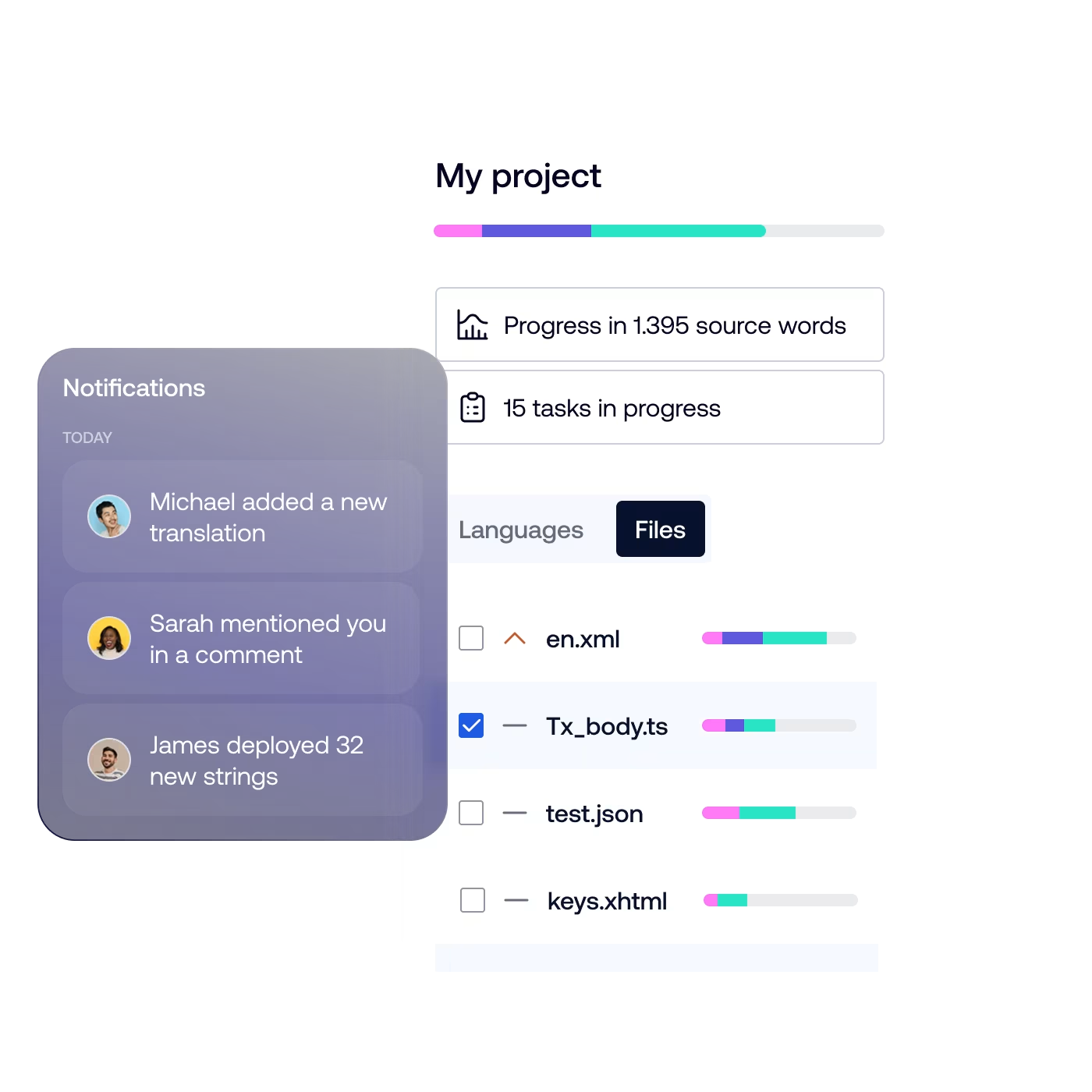
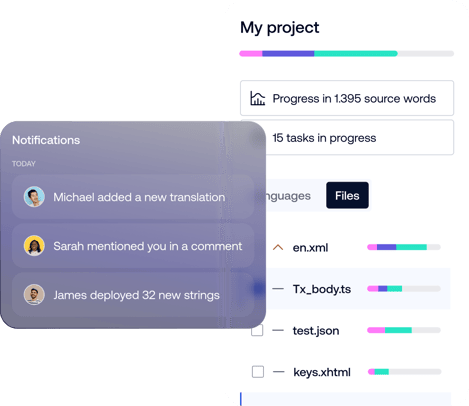

Redefine translation quality with TQI.
TQI provides you insights to deliver production-ready translations without human intervention, streamlining localization workflows like never before.

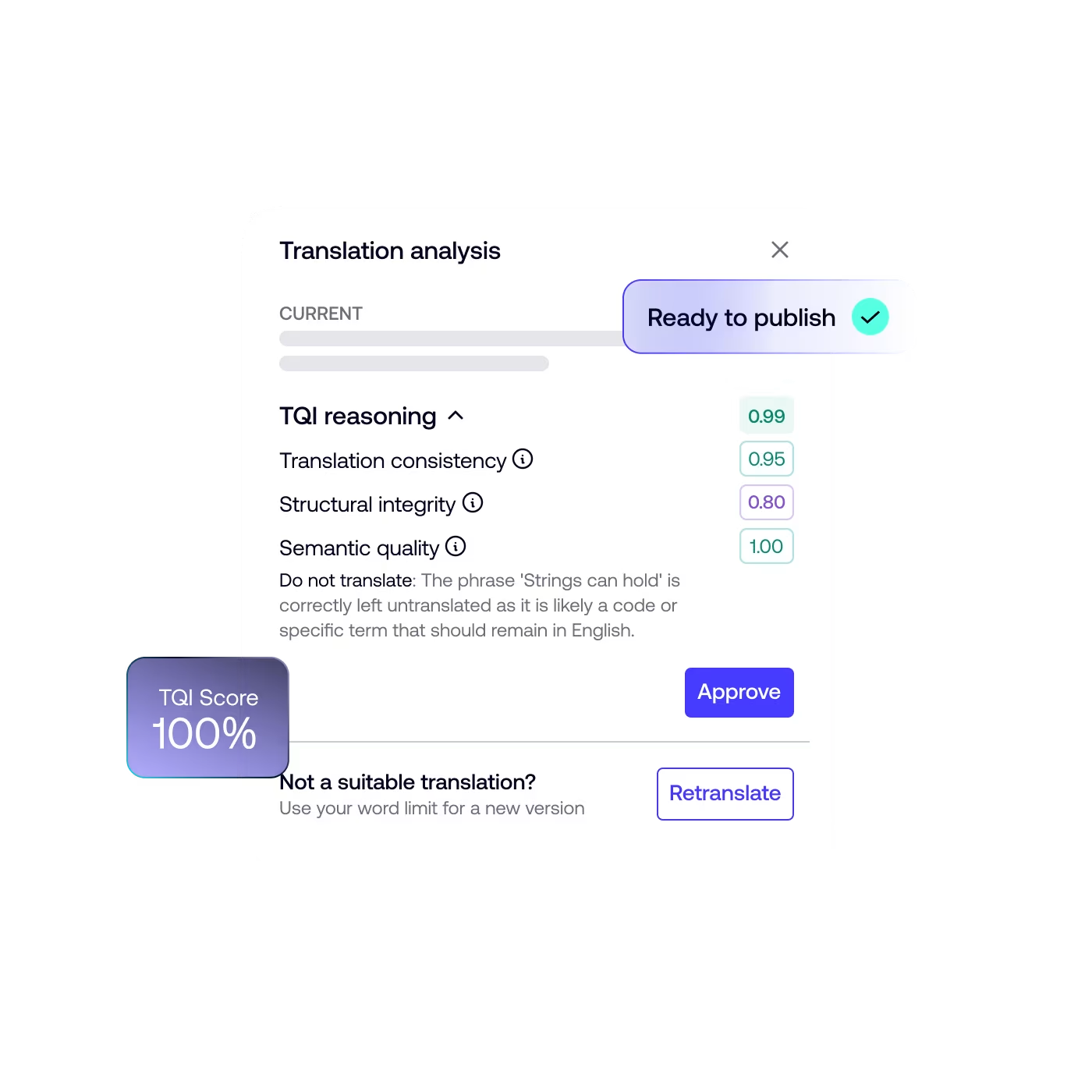
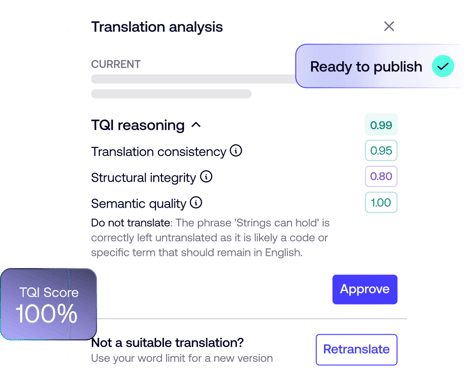

Publish translations you can trust, every time
Transfix AI combines advanced AI with your unique brand context, keeping your localization strategy one step ahead with on-brand translations at scale.

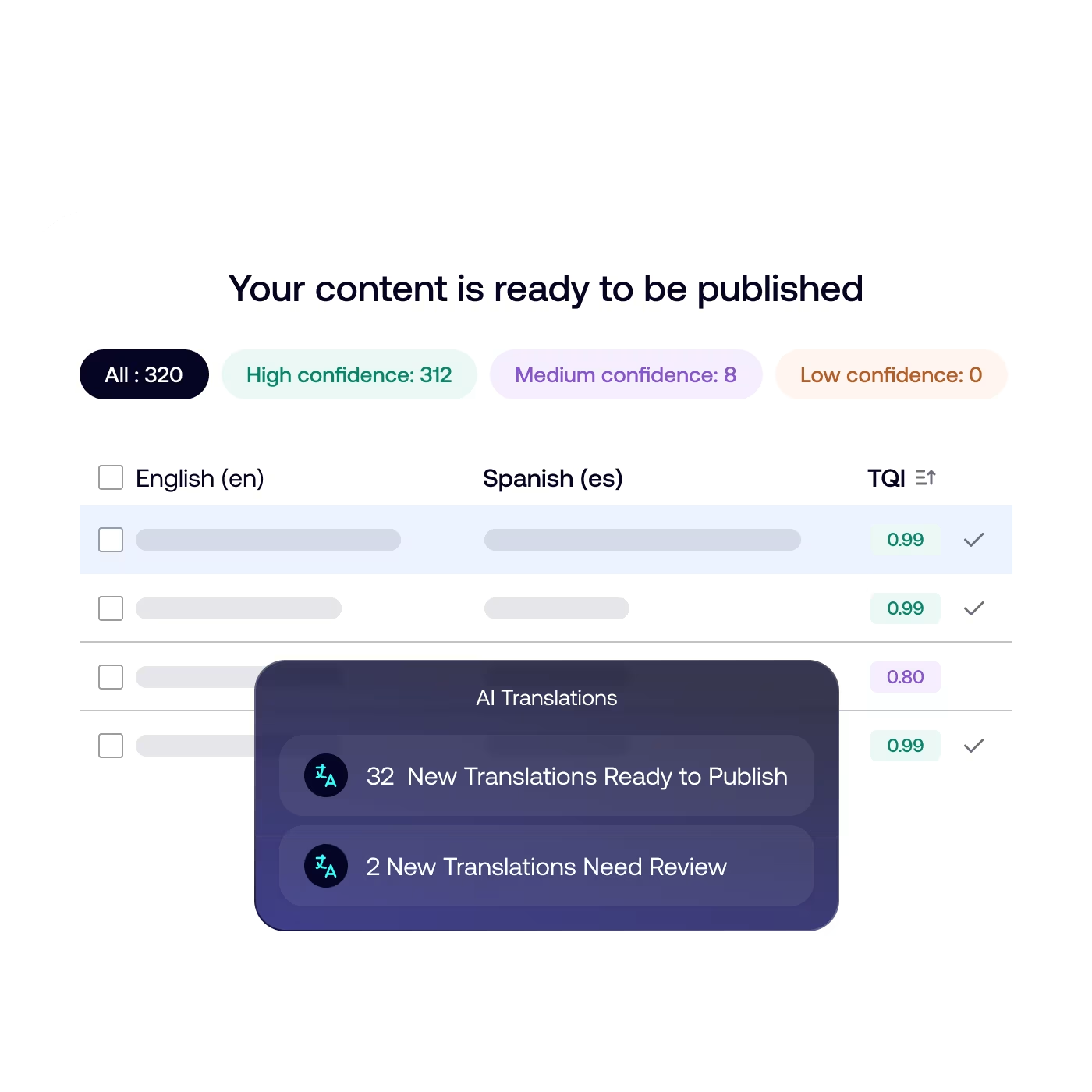
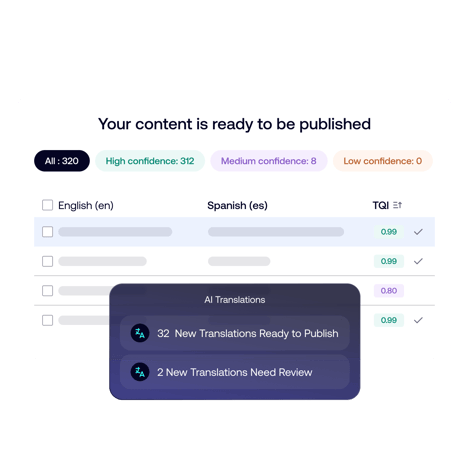

Manage translation projects across teams
Transifex TMS empowers seamless collaboration across teams.




Redefine translation quality with TQI.
TQI provides you insights to deliver production-ready translations without human intervention, streamlining localization workflows like never before.




Publish translations you can trust, every time
Transfix AI combines advanced AI with your unique brand context, keeping your localization strategy one step ahead with on-brand translations at scale.

























